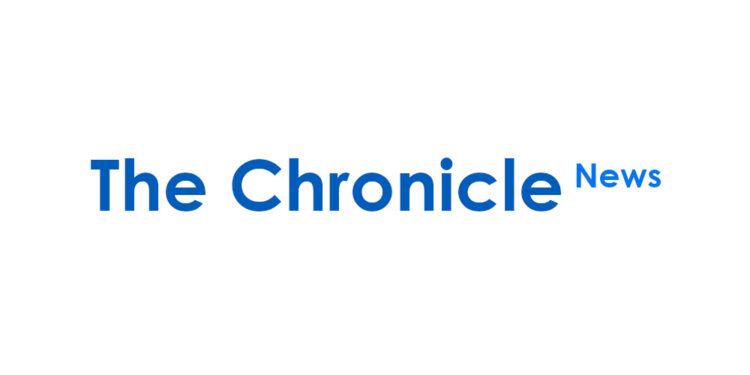BALTIMORE — Over the last 12 years, Baltimore spent at least $197 million — an average of more than $16 million a year — combating the raging opioid epidemic, an expert hired by the city testified in its civil suit against two drug distribution companies.
William V. Padula, a professor of pharmaceutical and health economics at the University of Southern California’s Mann School of Pharmacy and Pharmaceutical Sciences, said in court that he calculated as much, in part, by looking at the budgets for Baltimore’s police, fire and health departments, as well as the Mayor’s Office for Homeless Services, from 2011 and 2023.
Padula said he aimed to “be as conservative as possible in my estimation.” His calculations projected those city agencies would incur more than $73 million in expenses related to the opioid epidemic from 2024 to 2029.
His testimony Tuesday afternoon came in the fourth week of a trial on Baltimore’s lawsuit against drug distributors McKesson and AmerisourceBergen, which the city accused of pumping hundreds of millions of addictive painkillers into the region from 2006 to 2019 with little regard for the havoc the companies knew they were capable of wreaking.
What Padula said in court is critical to Baltimore’s case because the city’s lawyers are not only trying to persuade the jury to hold the distributors liable for depriving Baltimoreans of their right to public health and safety but asking jurors to award “millions and millions and millions” in damages to the city, as one attorney put it in opening statements in September.
While much of the testimony in the case to date has focused on what the companies did and didn’t do as well as the real world impacts of the epidemic on the streets of Baltimore, Padula’s accounting put a dollar figure on the crisis.
Before him, a former DEA agent went over McKesson and AmerisourceBergen’s policies around catching suspicious orders of opioids and provided analysis so granular it highlighted individual shipments of pain pills to pharmacies around Baltimore. In sum, the former agent said, the company ignored “red flags” that the drugs it sold were ending up in the wrong hands.
A fire chief said firefighters reversed up to 6,000 opioid overdoses every year with the life-saving drug Naloxone. An employee with the health department described efforts to mitigate the epidemic’s harm with programs such as needle exchanges and mobile clinics that treat related wounds. A supervisor in the Department of Public Works spoke of drug-affected areas littered with trash and used needles and soiled by human waste.
Attorneys for McKesson and AmerisourceBergen have said the companies are not responsible for Baltimore’s opioid problem, instead pointing the finger at cartels, gangs and street crews from bringing heroin and fentanyl to the city and selling them on street corners. Their questions throughout the trial have focused on illicit drugs, rather than prescription pills.
After listening to Padula, who’s also a scholar at his university’s Leonard D. Schaeffer Institute for Public Policy & Government Service, jurors heard from an insider at one of the drug distributors, a former McKesson salesperson in Maryland of about 40 years.
Called by the city, Garry Adam had to testify in person, rather than by videotaped deposition, because he lives in state.
Adam testified that it was his responsibility to keep McKesson’s customers in the Baltimore area, including independent pharmacies, happy by ensuring they had the products they needed to fill the shelves. Unlike with over-the-counter drugs, when a pharmacy was running out of opioids or other controlled substances, Adam had to fill out a questionnaire requesting more on their behalf.
After Adam filled out the questionnaire, it was up to the company’s regulatory department to approve or deny the request for more opioids. Taken together, the testimony of Ruth Carter, the former DEA agent, and Adam, showed McKesson rarely declined to increase a pharmacy’s opioid threshold.
In the case of one business, Drug City Pharmacy in Dundalk, which has been described in court as one of McKesson’s largest opioid customers nationwide, Adam submitted on back-to-back days in August 2009 requests from the pharmacy to increase its supply of oxycodone by 20,000 pills.
Those requests came during an approximately 10-month period where Drug City’s monthly oxycodone supply increased from 60,000 to 220,000 pills.
Adam often justified the pill increase requests by writing in the questionnaire, “customer (sic) business increasing at a very high rate.”
Carter previously testified that records she reviewed showed Drug City ordered more oxycodone than any other pharmacy in the country, describing the finding as “shocking.”
“This is just so much oxycodone,” Carter testified. “There’s no explanation I can think of.”
The former owner of Drug City, Mark Lichtman, meanwhile, said in a deposition that Adam “congratulated me for being the top oxy person for McKesson.”
Adam defended his work during his testimony, describing the pharmacy as a “very, very big store prescription wise.”
“Doctors,” he said, “wrote the prescriptions for oxycodone. … We couldn’t tell if that prescription was good, bad, cash or credit.”
_________
©2024 Baltimore Sun. Visit baltimoresun.com. Distributed by Tribune Content Agency, LLC.
Want to reach a local audience and grow your business?
Our website is the perfect platform to connect with engaged readers in your local area.
Whether you're looking for banner ads, sponsored content, or custom promotions, we can tailor a package to meet your needs.
Contact us today to learn more about advertising opportunities!
CONTACT US NOW




